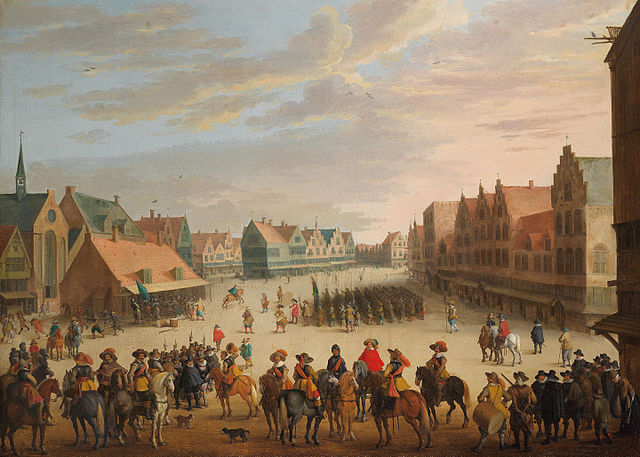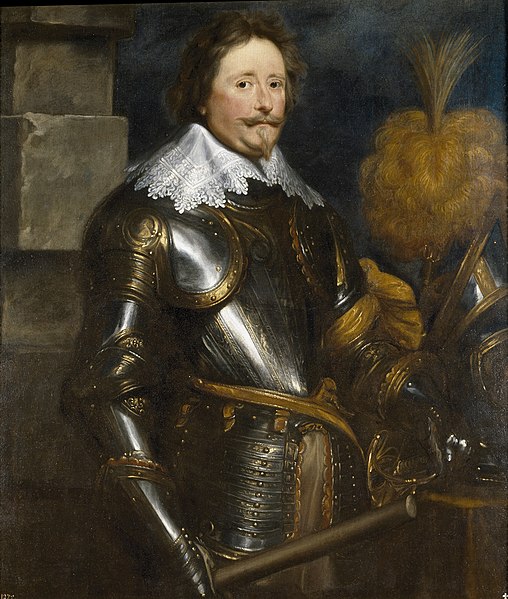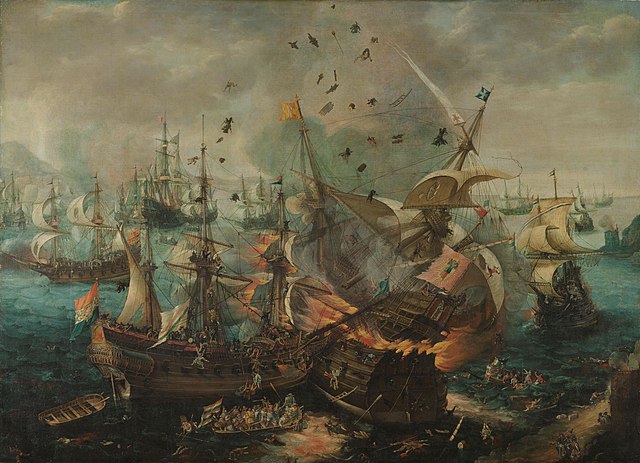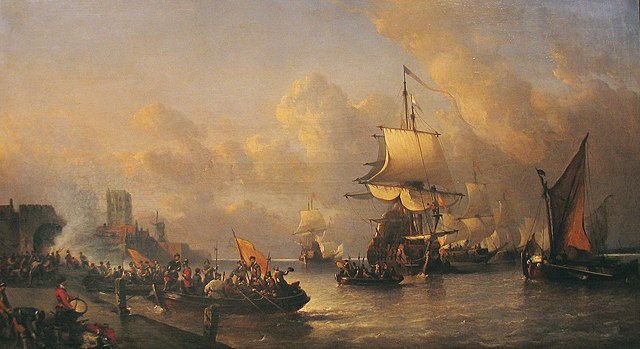The Dutch States Army was the army of the Dutch Republic. It was usually called this, because it was formally the army of the States-General of the Netherlands, the sovereign power of that federal republic. This army was brought to such a size and state of readiness that it was able to hold its own against the armies of the major European powers of the extended 17th century, Habsburg Spain and the France of Louis XIV, despite the fact that these powers possessed far larger military resources than the Republic. It played a major role in the Eighty Years' War and in the wars of the Grand Alliance with France after 1672.
Exercise of the Hollandsche Gardes regiment at the Koekamp in The Hague under the command of Jacob van Kretschmar, 1778.
Prince Maurice of Orange dismissing mercenaries in Neude Square in Utrecht on 31 July 1618.
Maurice of Nassau
Frederick Henry
The Eighty Years' War or Dutch Revolt was an armed conflict in the Habsburg Netherlands between disparate groups of rebels and the Spanish government. The causes of the war included the Reformation, centralisation, excessive taxation, and the rights and privileges of the Dutch nobility and cities.
The Battle of Gibraltar, 1607.
The Beeldenstorm or Iconoclastic Fury was a more or less organised destruction of Catholic sacred objects which swept through the Habsburg Netherlands' churches in 1566. 1630 painting by Dirck van Delen
Capture of Brielle in 1572 by Anthonie Waldorp (1862)
Stadtholder Maurice of Nassau during the 1600 Battle of Nieuwpoort, a tactical Dutch victory for little gain








